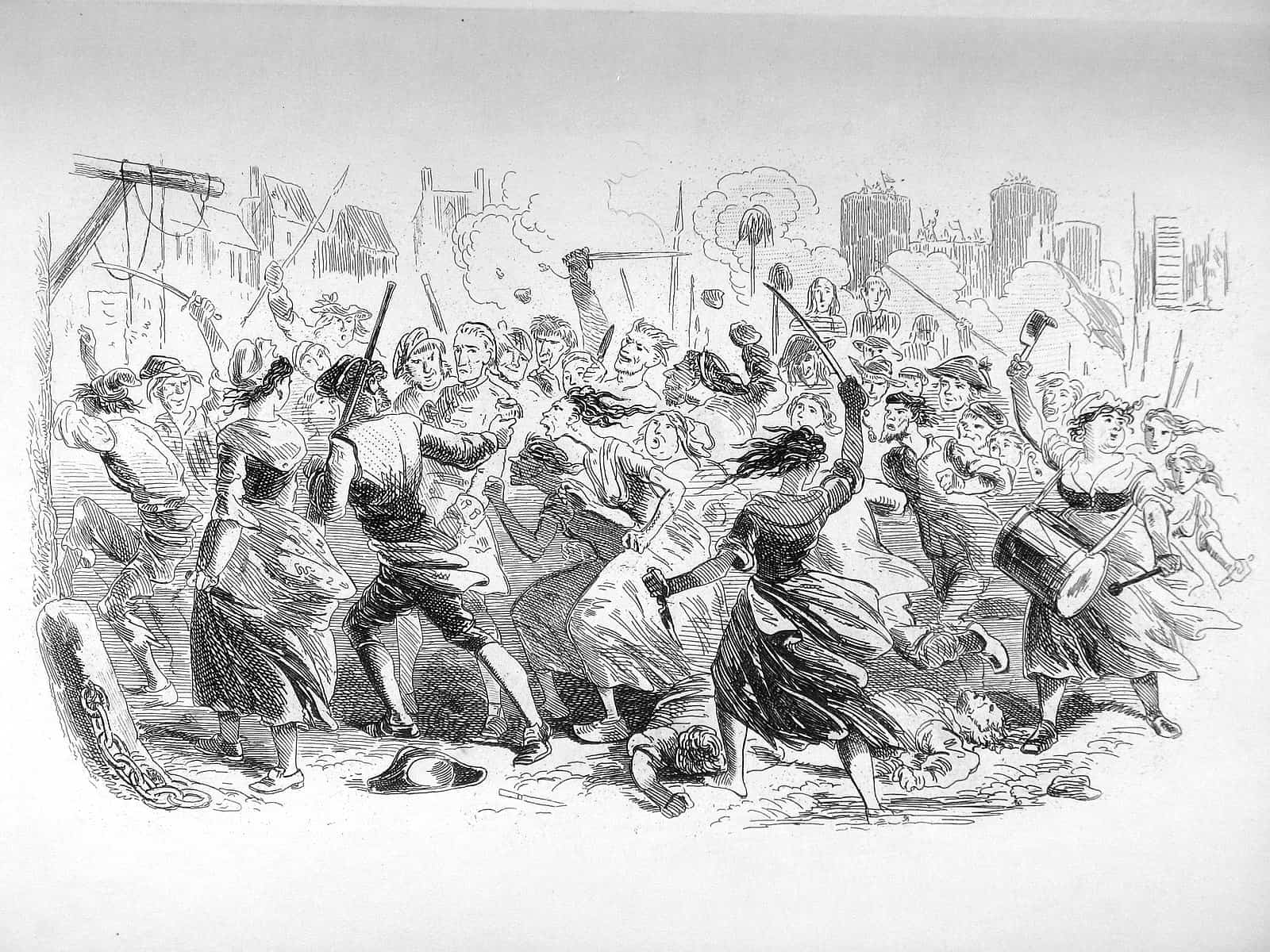The Best of Times: Reviewing A Tale of Two Cities

Some might look at society today and think inequality is a symptom of modern day capitalism. They would be wrong. As Charles Dickens vividly described in A Tale of Two Cities, class and economic inequality has a long history. Revolution usually follows.
Dickens did a masterful job telling this tale through historical fiction, which was somewhat beyond the scope of his best known works like David Copperfield or Oliver Twist. In A Tale of Two Cities, Dickens told the story of the French Revolution primarily through the eyes of the Manette family.
Although oversimplified at times, he dexterously wove the storylines of the Manette family with other characters from two countries (England and France), with the French Revolution as the backdrop. As with many of his novels, Dickens explored themes like class strife and injustice, with a focus on the destitute and the downtrodden.
Vivid Scenes
There were heart-wrenching scenes from the earlier parts of the book as aristocrats like Monsieur the Marquis treated the poor like annoying objects in his way. When Monsieur the Marquis’s carriage killed a poor child, the attitude and perspective of the French elites at the time was on full display by Dickens.
“Monsieur the Marquis ran his eyes over them all, as if they had been mere rats come out of their holes. He took out his purse. ‘“It is extraordinary to me,’ said he, ‘that you people cannot take care of yourselves and your children. One or the other of you is forever in the way. How do I know what injury you have done my horses. See! Give him that.’”
Another scene that illustrated a wine spill in a working class neighborhood of Paris was powerful and beautiful.
“There was no drainage to carry off the wine, and not only did it all get taken up, but so much mud got taken up along with it, that there might have been a scavenger in the street, if anybody acquainted with it could have believed in such a miraculous presence.”
My Favorite Character
In that same working class neighborhood was the wine shop of my favorite character in the book, Madame Defarge. Although she was a revolutionary cut from a cloth of pure evil, the incendiary rage and desire for revenge was both understandable and unforgettable.
Her actions also highlighted how a revolution, no matter how noble, can be rife with injustices of its own. Defarge was obsessed throughout the novel with exacting revenge on Charles Darnay (who married into the Manette family), despite the fact it was Darnay’s extended family (the Evrémondes) who were truly to blame.
No matter. For Defarge, there was no due process in the revolution, which embodied the historical spirit of the Reign of Terror. Anyone with even a minor association to aristocracy was at risk.
The way Dickens portrayed Madame Defarge was a very realistic rendering of a revolutionary. Rarely are these types of figures morally pure. Revolutions are messy. The most orderly thing about Defarge was her knitting, which helped her organize her hit list. She was truly symbolic of the Reign of Terror, as she fought to send all real or suspected enemies of the Republic to the guillotine.
Weaknesses and Strengths
Despite the masterful storytelling and expert infusions of narrative and history, this Dickens classic was not without faults. The first couple books, in particular, tended to drag on with superfluous detail. Most editors today (and maybe even back then) would probably cringe at the paragraphs Dickens used to describe innocuous things that did not drive the story forward. It made for tiring and laborious reading at times.
Yet Dickens could get away with it because he was the best at delivering a punchline, like the trained thespian he was. An example was the carriage scene I featured above. It took so many unnecessary words and details to get there, but once the scene finally unfolded, I was left awestruck and lost in thought, for hours after putting the book down (which is a good test – I find – for whether a book is impactful or not).
Takeaway
So be prepared to labor if you have yet to read this classic. But also know that your labor will be rewarded in the end, especially if you enjoy historical fiction and vivid, unforgettable characters.
Overall I gave the book a 4 out of 5 stars. Had Dickens cut down the fluff, it would have been an easy 5/5, primarily for “Book the Third” alone (the final section of the novel). This book was the most action-packed, with Defarge on her revenge crusades and the revolution in full swing (along with the guillotine).
Rare is the book that has not one, but two, of the most famous lines in literature. I won’t spoil the finale from Sydney Carton, but trust that if you read or revisit this book, it will be (mostly) the best of times, not the worst.


